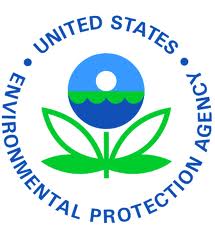 |
To manage this risk, EPA is pursuing the use of the Toxic Substances Control Act (TSCA) to cover new chemical substances, including applicable nanomaterials, as well as nanomaterials already in commerce, using a comprehensive four-step process:
1) Premanufacture Notifications (PMN) – the information required includes all available data regarding chemical identity, production volume, byproducts, use, environmental releases, disposal practices, and human exposure.
2) Significant New Use Rule (SNUR) – under TSCA Section 5(a)(2), would require submission of a Significant New Use Notice (SNUN) at least 90 days prior to commencing activity and provide the EPA with information regarding chemical identification, material characterization, physical/chemical properties, commercial uses, production volume, exposure and fate data, and toxicity data. SNURs covered under TSCA Section 5(e) are issued as Consent Orders binding only on the original PMN submitter and, generally, are then promulgated as a Final Rule that requires compliance by all other manufacturers and processers within the terms and conditions contained in the Consent Order. Typical Consent Order requirements may include:
- Testing for toxicity or environmental fate once a certain production volume or time period is reached
- Worker use personal protective equipment
- New Chemical Exposure Limits (NCELs) for worker protection
- Hazard communication language
- Distribution and use restrictions
- Restrictions on releases to water air and land, and
- Recordkeeping requirements
Information Gathering Rule – under TSCA Section 8(a), would require manufacturers of nanomaterials already in commerce to submit additional information including production volume, methods of manufacture and processing, exposure and release information, and available health and safety data.
Forget expensive calls to lawyers and consultants. With Enviro.BLR.com, you get instant access, 24/7. Try it out today and get an the 2014 EHS Salary Guide, absolutely free. Download Now.
Test Rule – under TSCA Section 4, would require testing for nanomaterials already in commerce, especially those classes of materials that are not already being tested by another U.S. or international agency or organization.
In addition to new chemical SNURs covered under TSCA 5(e), EPA may also promulgate a SNUR without a Consent Order when it is determined that potential new uses (other than those identified in a PMN) could result in increased risks to human health or the environment via exposures to, or releases of the substance. Known as Non-Section 5(e) SNURs, they provide EPA with the means to implement additional safeguards for release scenarios that may not have occurred to the PMN submitter but that EPA foresees as possibilities.
To determine whether or not a chemical is subject to SNUR, manufacturers, processors and importers should refer to the TSCA Inventory which designates SNUR-covered chemicals with an “S”. Such designated chemicals intended for a significant new use require submission of a SNUN 90 days prior to the manufacture of that substance. The non-confidential TSCA Inventory is available at http://www.epa.gov/opptintr/existingchemicals/pubs/tscainventory/howto.html. When a potential manufacturer submits a PMN or a Notice of Bona Fide Intent to Manufacture (40 CFR Section 720.25) for a material that is listed on the Confidential Inventory, the submitter will be notified by the EPA of the existence of a SNUR.
Everything You Need for Environmental Compliance
Enviro.BLR.com puts everything you need at your fingertips, including practical RCRA, CAA, CWA, hazardous waste regulatory analysis and activity, news, and compliance tools. Try it at no cost or risk and get a FREE report.
Manufacturers or processors selling chemical substances are also responsible for notifying users of the SNUR status of the substance. Purchasers of confidential chemical substances should seek certification from the seller that their intended use is not a significant use.
As of March 4, 2014, reporting under TSCA Sections 4, 5, 8(a) and 8(d) are subject to e-reporting requirements and effective on that date, EPA will only accept information submitted through the Central Data Exchange (CDX) and the Chemical Information Submission System (CISS) tool. Submissions of TSCA Section 5 must be submitted through CDX using the e-PMN software available at http://www.epa.gov/cdx/.
